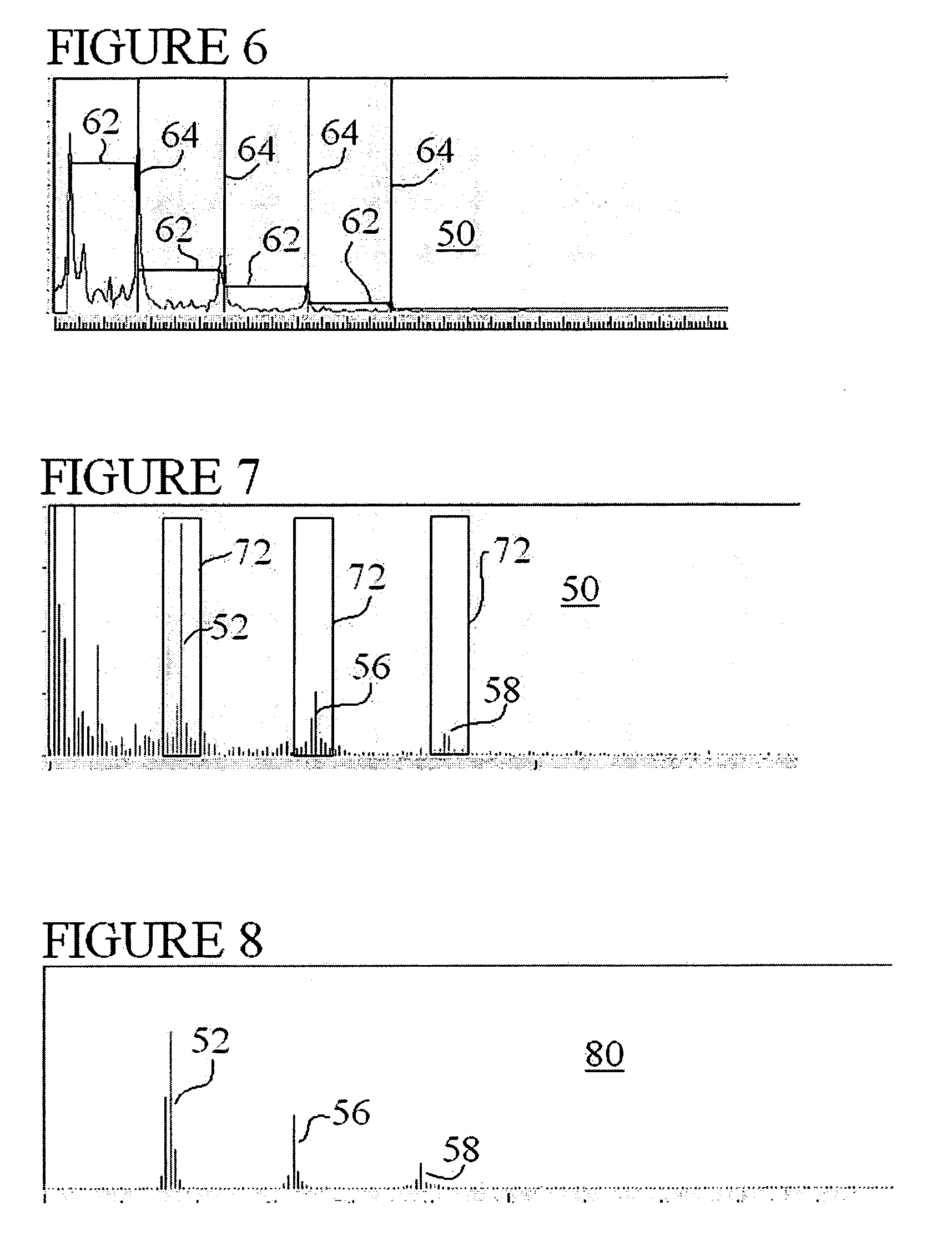Techniques for accurately deriving physiologic parameters of a subject from photoplethysmographic measurements
a technology of physiologic parameters and photoplethysmography, which is applied in the field of medical devices and techniques for accurately deriving cardiac and breathing parameters of subjects, can solve the problems of inability particularly small mammals, or the current commercial pulse oximeters do not have the capability to accurately measure the heart rate of non-compliant subjects, and the pulse oximeter measurements are very susceptible to motion artifacts and breathing effort, so as roll improvement or reduction of undesirable frequency content conten
- Summary
- Abstract
- Description
- Claims
- Application Information
AI Technical Summary
Benefits of technology
Problems solved by technology
Method used
Image
Examples
Embodiment Construction
[0034]As described above, the present invention provides several techniques for isolating either heart or breath rate data from a photoplethysmograph, which is a time-domain signal or data set such as from known pulse oximeter sensors. A pulse oximeter system according to one aspect of the present invention is designed for small mammals such as mice and rats, such as using sensors sold under the Mouse OX™ brand by Starr Life Sciences, but the present invention is not limited to this application. The conventional pulse oximeters include a conventional light source, conventionally a pair of LED light sources, one being infrared and the other being red. The conventional pulse oximeters include a conventional receiver, typically a photo-diode. The light source and receiver are adapted to be attached to an external appendage of a subject, and may be secured to a spring-biased clip or other coupling device such as tape adhesives or the like. A specialized clip is available from Starr Life...
PUM
 Login to View More
Login to View More Abstract
Description
Claims
Application Information
 Login to View More
Login to View More - R&D
- Intellectual Property
- Life Sciences
- Materials
- Tech Scout
- Unparalleled Data Quality
- Higher Quality Content
- 60% Fewer Hallucinations
Browse by: Latest US Patents, China's latest patents, Technical Efficacy Thesaurus, Application Domain, Technology Topic, Popular Technical Reports.
© 2025 PatSnap. All rights reserved.Legal|Privacy policy|Modern Slavery Act Transparency Statement|Sitemap|About US| Contact US: help@patsnap.com



